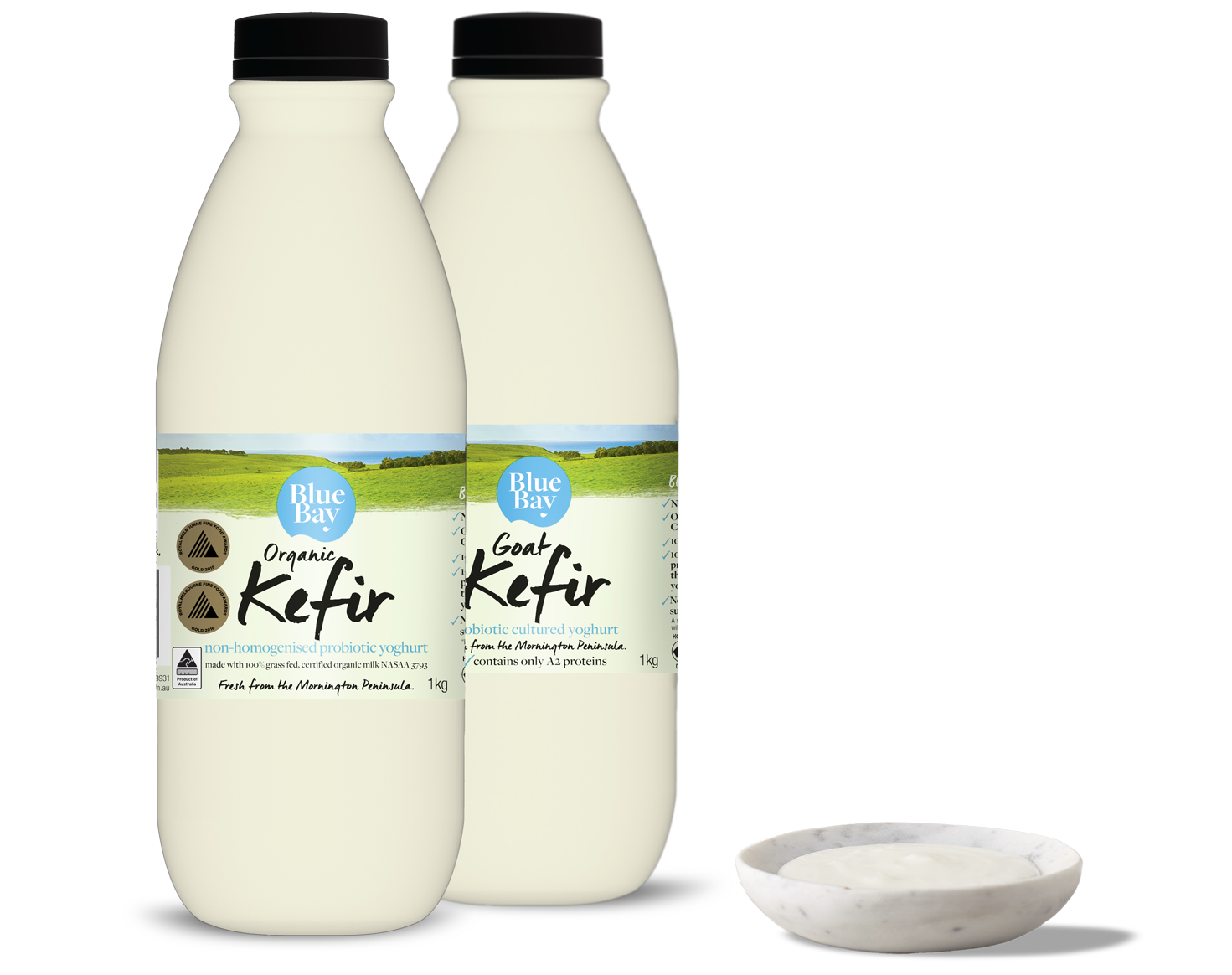In Love with Kefir
Blue Bay’s founder Andre Kogut is a gentle man with a generous smile and a burning passion for kefir. He has been producing one of the best-fermented yogurt products in the nation at Blue Bay Cheese in Mornington, about 60km south of Melbourne, for the past 12 years. It is only now, however, that the world is catching up to him.
Kefir is a traditionally fermented, non-homogenised yoghurt product and is an amazing source of probiotics – beneficial bugs that are great for your gut health. It is only in the past few years that the world has caught up with the benefits of this ancient way of preserving milk. Now, looking at global food trend reports, kefir is about to go the way of kale and coconut water. Andre is not fazed. ‘My grandmother drank kefir everyday,’ he says in his soft Ukrainian accent, ‘She worked hard every day until she died at 89. She was a fit woman right until the very end.’
Andre grew up in the Ukrainian countryside in the green valleys of the Eastern Carpathian Mountains. He learned to make kefir by his grandmother’s side. It was made in small batches from a small herd of hand-milked cows and sold or bartered to locals. ‘My grandmother would keep it cool by storing it in a jar that was kept in a basket and lowered by rope into the well water. She would consume it as part of a meal for breakfast,’ he remembers.
With this Andre shows us a sample of his just-fermented kefir. It has the lovely dairy aroma of milk with a mild ‘tangy’ taste. Although slightly viscous it has a clean mouth feel and finishes smoothly. It has the length of flavour of the lightest curd cheese and a pleasing savoury sensation. When it hits the stomach it doesn’t cause the heaviness of having consumed milk (think drinking a milkshake or Big M). As kefir is a traditionally fermented, non-homogenised probiotic yoghurt product, it just feels good.
That pleasing tang and softness on the tummy comes from the fermentation of quality milk. It is an ancient process that Andre has brought into the 21st century by applying traditional techniques to modern equipment and standards and by using some of the best organic milk in the country. This he gently and slowly heats to 65C to kill potential pathogens while retaining fat structure and enzymes. The milk is never homogenised. A mix of 12 strains of beneficial live cultures – good bacteria that consume the lactose in the milk and turn it into lactic acid – are then added. The lactic acid gives the kefir its clean taste and makes the proteins in the milk change their structure to form a net or matrix that captures the liquid and other nutrients in a lovely smooth thick texture. It’s a thorough process that takes 16 hours. When the kefir is bottled the unhomogenised butterfat rises to the top and solidifies, forming an airtight plug that stops the kefir from oxidising. It also protects flavour, nutritional value and extends shelf life. Blue Bay Kefir – with no added thickeners or preservatives – can last a good six weeks on the fridge shelf.

Kefir contains probiotics capable of colonising the gut where they improve cholesterol metabolism and promote a healthier immune system. They also help balance good and bad bacteria and are effective in managing gastroenteritis. There is evidence to show that kefir consumption has been associated with improvements in people suffering from diabetes, irritable bowel syndrome, allergies and autoimmune disorders.
No surprise, then, that Blue Bay Kefir – available around Victoria and across NSW – is becoming popular with consumers keen to improve their health. And more recently, it has more than doubled in sales within South East Queensland.
Andre has a small file of letters from customers who report their symptoms, including arthritis and asthma, improved after they made kefir part of a healthy diet. ‘My grandmother always said that kefir made you happy,’ says Andre. He reckons she was dead right. Modern science proves that good mental health is associated with a healthy gut.
While kefir is great to consume on its own daily, cooking and preparing food with kefir is also versatile and easy. Just store it upright in the fridge so the fat cap stays in place. Because it is acidic it can be used in recipes where cultured buttermilk is called for. The lactic acid activates baking soda, making for fluffy pancakes. It is perfect blended with ice and fruit – and perhaps a little honey – to make delicious yogurt-based desserts. Because it has a subtle savoury flavour it can also be folded through with some olive oil, salt and a little garlic and used as a side dish for salads and grilled meats, such as lamb.
‘Kefir is simply a way of life,’ says Andre. ‘It’s the healthiest way of having dairy in your diet for all the nutrients, almost zero lactose plus the probiotics that will keep your gut healthy. It has been keeping my family healthy and happy for scores of generations. And now we’re continuing the tradition in Australia.’

